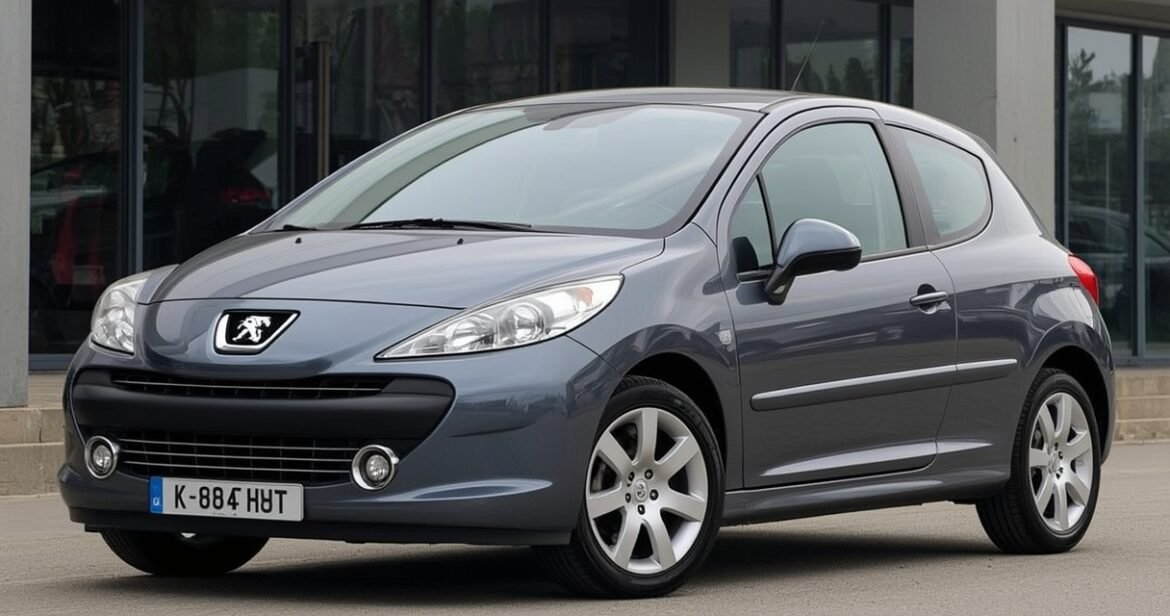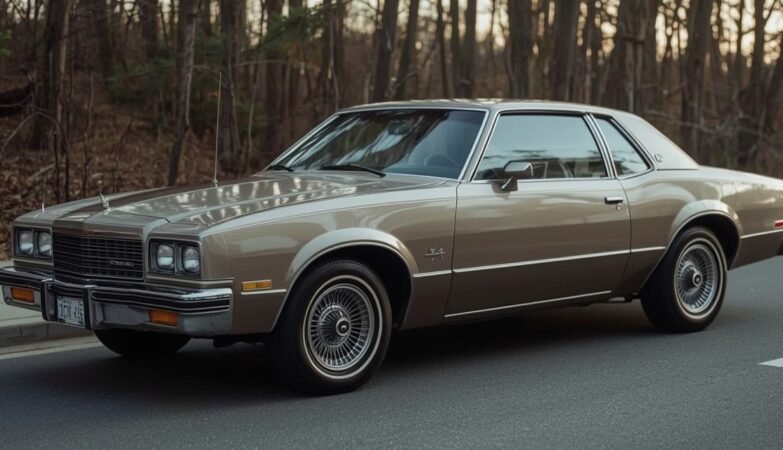Though it lasted just one generation, the Peugeot 207 was a popular car back in its day and is still considered a good used buy thanks to its low running costs and five-star Euro NCAP safety rating.
This owners’ guide compiles key information about your 207 in one convenient place, covering service intervals, recommended tyre pressures, and answers to frequently asked questions to help you keep your car running smoothly.
Peugeot 207 generations
Peugeot 207 2006-2012
The 207 was launched in 2006 on a platform shared with the Citroen C3. It was larger and more refined than the 206 (the car it replaced), offering enhanced safety features and a spacious interior.
S and S+ were the entry-level trims, providing remote central locking, electric front windows, a trip computer, and a CD player. At the mid-end were the SE and SE Premium, which introduced alloy wheels and air conditioning. Allure was the luxury-focused trim, combining sporty aesthetics with rear parking sensors, dual-zone climate control, and a panoramic sunroof.
A 2009 facelift introduced subtle interior and exterior design updates and more efficient engine options.
Body styles:
-
Three-door hatchback
-
Five-door hatchback
-
Five-door estate (SW)
-
Two-door coupe cabriolet (CC)
Key engine options:
-
1.4-litre 8V 75bhp petrol
-
1.4-litre 95bhp VTi petrol
-
1.6-litre 110bhp petrol
-
1.6-litre 120bhp VTi petrol
-
1.6-litre 150/156/175bhp THP turbo petrol
-
1.4-litre 68-70bhp HDi diesel
-
1.6-litre 90/92/110/112bhp HDi diesel
Service intervals
Maintaining your 207 is crucial to prevent breakdowns and extend its lifespan. You can find the servicing recommendations for your vehicle in your owner’s guide.
A good rule of thumb for most cars is to book a full service once a year or every 12,000 miles. The following maintenance intervals are recommended by Haynes for 2006-2013 207 models.
Check every 250 miles:
-
Engine oil level
-
Coolant level
-
Screenwash level
-
Brake and clutch fluid level
-
Tyre condition and pressure
-
Battery condition
-
Wiper blade condition
Where mileage and distance is given, carry out maintenance at whichever comes first.
| Petrol models | Diesel models |
|---|---|
| 10,000/12 months | 6,000 miles/12 months |
| Renew engine oil and filter | Renew engine oil and filter |
| Check for fluid leaks | Check for fluid leaks |
| Check condition of driveshaft joints and rubber gaiters | Check steering, suspension, driveshaft rubber gaiters and CV joints |
| Lubricate hinges and locks | Lubricate hinges and locks |
| Carry out road test | Drain water from fuel filter |
| 20,000 miles/2 years | 12,000 miles |
| Reset service interval indicator | Reset service interval indicator |
| Check pollen filter | Check pollen filter |
| Check auxiliary drivebelt | Check auxiliary drivebelt |
| Check brake pads and shoes | Check brake pads and shoes |
| Check handbrake operation | Check handbrake operation |
| Check steering and suspension | Carry out road test |
| 40,000 miles/3 years | 24,000 miles |
| Renew timing belt (non-VTi engines) | Renew fuel filter |
| Renew brake and clutch fluid | Check manual transmission oil level |
| – | Renew air filter |
| 40,000 miles/4 years | 36,000/3 years |
| Renew spark plugs | Renew timing belt |
| Renew fuel filter | Renew brake and clutch fluid |
| Renew air cleaner filter element | – |
| Check manual transmission oil level | – |
| Check automatic transmission fluid level | – |
| Check exhaust emissions | – |
| Renew coolant | – |
| – | 48,000 miles |
| – | Renew coolant |
| – | 72,000/5 years |
| – | Check particulate emission filter (if fitted) |
Want to learn more about vehicle servicing? Check out the following guides:
-
What’s the difference between a full service and an interim service?
-
How much should a full service cost?
-
How much should an interim service cost?
-
The ultimate guide to car maintenance
Tyre pressure
What are the tyre pressures for a Peugeot 207?
The recommended tyre pressure varies depending on the spec and engine of your car. The table below shows tyre sizes and pressures listed for the 207 on TyrePressures.com.
However, you should always check this information before adjusting your tyres. You can find the correct pressure:
-
In the vehicle handbook/owner’s manual.
-
Printed on the sill of the driver’s door.
-
On the inside of the fuel tank cap.
Read our guide to tyre pressure for more information.
| 207 model year | Front tyre size | Front tyre pressure | Rear tyre size | Rear tyre pressure |
|---|---|---|---|---|
| 2014 | 205/45/R17 88 W | 35 PSI/2.4 BAR | 205/45/R17 88 W | 35 PSI/2.4 BAR |
| 2013 | 195/55/R16 91 V | 35 PSI/2.4 BAR | 195/55/R16 91 V | 35 PSI/2.4 BAR |
| 2012, 2011, 2010, 2009, 2008, 2007, 2006 | 185/65/R15 88 T | 35 PSI/2.4 BAR | 185/65/R15 88 T | 35 PSI/2.4 BAR |
Engine oil
It’s crucial to use the correct engine oil – find out why in this guide.
The recommended oil can vary between different 207 engine configurations and depending on whether the car uses petrol or diesel. Your owner’s manual will provide information about the right oil for your vehicle.
According to Haynes’ maintenance guide, the following oils are suitable.
-
TU and ET petrol models: SAE 10W40, 5W40, 5W30 or 0W30 multigrade engine oil to ACEA A3 and API SJ/SL specification.
-
EP VTi petrol models: SAE 5W30 or 0W30 multigrade engine oil to ACEA A3 and API SJ/SL specification.
-
Diesel models without DPF: SAE 10W40, 5W40, 5W30 or 0W30 multigrade engine oil to ACEA B3 and API CD/CF specification.
-
Diesel models with DPF: SAE 10W40, 5W40 or 5W30 multigrade engine oil to ACEA B3 and API CD/CF specification.
What is the oil capacity of a Peugeot 207?
Oil capacity varies depending on the engine size and model year. The 207 generally requires 3.75-litres for diesel engines and 4.25-litres for petrol versions.
Battery
What battery do I need for my Peugeot 207?
The table below shows the battery requirements of Peugeot 207 engine variants using information from What Battery. The base hold-down is B13.
| Fuel type | Engine(s) | Battery type | Typical size (LxWxH, mm) | Voltage | Capacity (Ah) |
|---|---|---|---|---|---|
| Petrol | 1.4, 1.4 16V, 1.6 16V RC, 1.6 16V THP, 1.6 16V turbo | Lead-acid | 207x175x190 | 12V | 50-54 |
| Diesel | 1.4 HDi, 1.6 HDi, 1.6 HDi 110 | Lead-acid | 242x175x190 | 12V | 60-65 |
What are the signs my Peugeot 207 battery needs replacing?
The following signs often indicate an imminent battery failure.
-
Dim headlights
-
Slow engine crank
-
Electrical issues
-
Corroded battery terminals
-
Check engine light
Noticed one or more of these symptoms? It’s time to get your 207’s battery checked by a professional.
Although it’s inevitable that car batteries eventually die, there are things you can do to make them last longer. With that in mind, here are our top tips for maintaining your car battery.
Warning lights
What do the warning lights mean on a Peugeot 207?
Dashboard warning lights are triggered by the car’s electronic control unit (ECU) when a problem is detected. You can learn some information by looking at the shape and colour of the light, but for a detailed diagnosis, you’ll usually need to book a diagnostic test.
-
Red lights indicate a severe problem. You should stop driving and contact a mechanic.
-
Yellow lights are less urgent – you can continue driving to your destination, but you should book your car into a garage.
Learn more about car warning lights and what they mean in this guide.
Peugeot 207 warning lights you might not know
Peugeot anti-pollution fault warning
The anti-pollution fault warning appears as a message on the display rather than a dashboard symbol. It signals a problem with the car’s emission control system and can be triggered by a range of issues, such as:
-
Fouled spark plugs
-
Blocked or damaged exhaust components (e.g. catalytic converter, DPF or EGR)
-
Low-quality or incorrect fuel
-
Misfires due to incorrect fuel ratio
-
ECU fault
Some of the above issues can cause engine damage if left unchecked, so if you spot this warning message, take your car to a garage for a diagnostic test as soon as possible.
Peugeot electronic stability programme warning light
The electronic stability programme warning light looks like a car with skid marks and the letters ESP. There are two instances where this light will stay on. The first is if ESP is switched off, and the second is if the system has a fault.
If you haven’t switched it off and you’re seeing this light, you’ll need to arrange a diagnostic test to determine what’s causing it. It’s usually one of the following issues:
-
Sensor malfunctions
-
ABS fault
-
Brake issues
-
Wiring issues
-
Faulty throttle body
-
Faulty brake light switch
Although you can continue driving with the ESP warning light illuminated, the system is designed to improve your comfort and safety, so it isn’t something you should ignore.
Spotted a warning light but don’t know what’s causing it? Don’t guess – book a diagnostic test!
Common problems
Here, we look at two common problems with the Peugeot 207.
1. Seized brakes
Some 207 owners have reported hearing an unpleasant grinding noise from their car, often after it’s not been used for a while. The culprit is the rear brake pads, which can seize onto the discs.
In addition to the grinding noise, you might notice that your car has less braking power.
The solution is to clean up the brakes and fit brake dust covers.
2. LED dashboard display failure
In addition to various electrical issues, such as speedo and warning light malfunctions, the LED dash display in some 207 models can fail, requiring a replacement.
Possible causes include:
-
Wiring problems
-
Loose connections
-
Software glitches
-
Blown fuses
Since the dashboard display is a vital piece of kit, this problem needs fixing ASAP. We recommend contacting an auto electrician.
Need help diagnosing car problems? Check out the following guides for advice:
-
Diagnose car problems & find the right fix
-
Diagnose strange noises in your car & find a fix
Top Peugeot 207 questions and topics
How to reset the anti-pollution fault on a Peugeot 207
The first step is to find out what has triggered the warning message by booking a diagnostic test. The technician who carries out the test will tell you the exact cause and suggest possible solutions.
To reset the light, you must fix the issue that caused it in the first place.
How do you change the time on a Peugeot 207?
The time adjustment method may vary depending on the year and trim of your 207. If unsure, consult your owner’s manual.
-
Switch the ignition on without starting the engine.
-
Press the menu button near the radio controls on the dashboard.
-
Use the up and down buttons to navigate the menu until you reach ‘display adjust’.
-
Press ‘OK’ to enter.
-
Press the up and down buttons to move between the month, day, hour and minutes. Use the left and right buttons to make adjustments.
-
Once you’re happy with the settings, press ‘OK’ to complete the reset.
How to reset the service light on a Peugeot 207
The reset method may vary depending on the year and trim of your 207. If unsure, consult your owner’s manual.
-
Press and hold the button below the instrument cluster on the right side.
-
Switch the ignition on without starting the engine.
-
You will see a countdown on the dashboard near the service warning light. Continue to hold the button.
-
When the countdown reaches zero, turn the ignition off and release the button.
-
The reset is complete.
What colour coolant is right for a Peugeot 207?
Peugeot 207 coolant is typically pink/red or blue. According to Haynes, the correct specification is a 50/50 mix of water and BASF Glysantin G33-23F.
Here’s more advice on selecting the proper coolant for your car.
Note: Avoid mixing coolant colours. If your car currently has pink coolant, you should top it up with pink coolant. If it is blue, top it up with more of the same.
If you found this guide helpful, you might also like:
-
Car ownership 101: everything you need to know
-
The ultimate guide to car maintenance
-
How does a car work?
-
Peugeot 206 owners’ guide

Automobilių entuziastas ir technikos žinovas, rašantis apie įvairias transporto sritis: nuo naujausių automobilių apžvalgų ir charakteristikų iki motociklų bei vairavimo mokyklų rekomendacijų. Jo tekstuose gausu praktinių patarimų, techninių įžvalgų bei naujienų iš automobilių pramonės. Ypač domisi variklių technologijomis, autoservisų paslaugomis ir automobilių priežiūra, siekdamas padėti skaitytojams priimti geriausius sprendimus.








